France: Day 2 - Hennessy Seminar: Part II
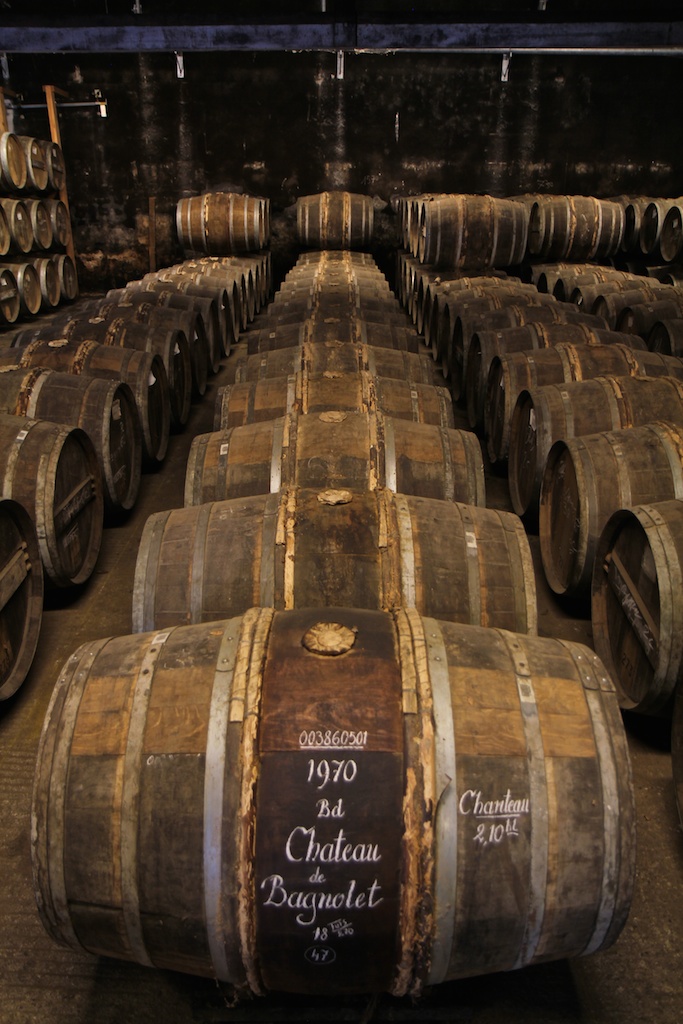
We had been to the warehouses of Hennessy in 2013—when we did the regular tour of the Cognac facility as part of a quick romp through town. Back then, when we saw the perfectly-poised chalk calligraphy adorning each barrel, we assumed these markings were just for the casks being kept in the one chai that allows visitors—a nice addition to the Disneyland effect reserved for the tourists. We asked Maurice, however, if we could visit one of the functioning facilities to see part of the bottling process. “No problem,” he said. We assumed the “real” warehouses would be much more rustic and less curated for guests. Yet, as soon as we walked in we realized that the beautiful handwriting was just as prevalent.
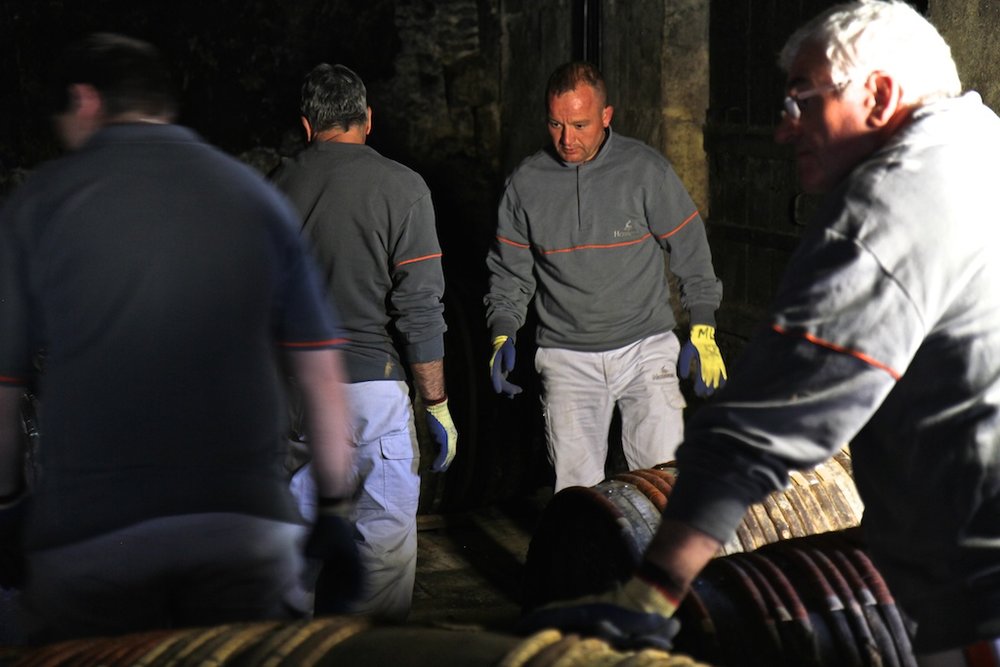
The workers were there pulling older brandies out of the cask and getting some of the mature liquid ready for blending. Again, like I mentioned before with Hine, you walk through these buildings—all full of Cognac from 50 to 150 years ago—and you think this can’t be functional. These can’t be real. They’re probably empty, or just for show. But I watched these guys uncork ancient barriques and pump the aged Cognac out of the wood and into a container. It’s a real place, making real brandies, despite the fact that it all seems too fantastic to be real.

We walked through another building with Maurice so that he could show us where his own estate Cognac was aging.
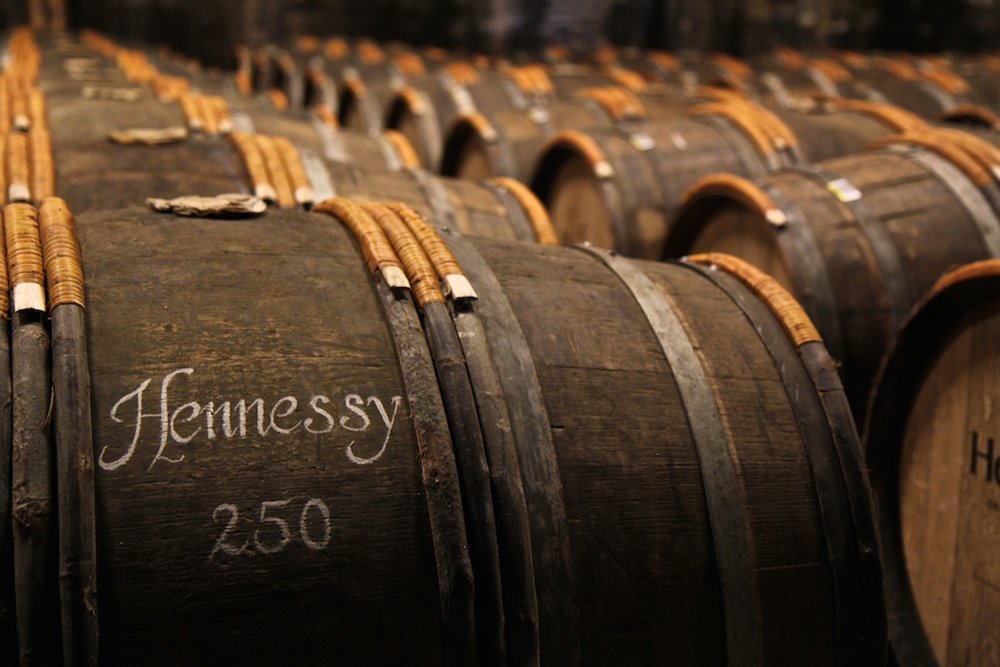
And then we found the treasure trove: the casks containing the new 250th anniversary blend. 270 liter barrels, re-coopered to hold 250 liters (a great gimmick) in tribute to the significance of the moment. We would get a preview of the new edition later that evening.
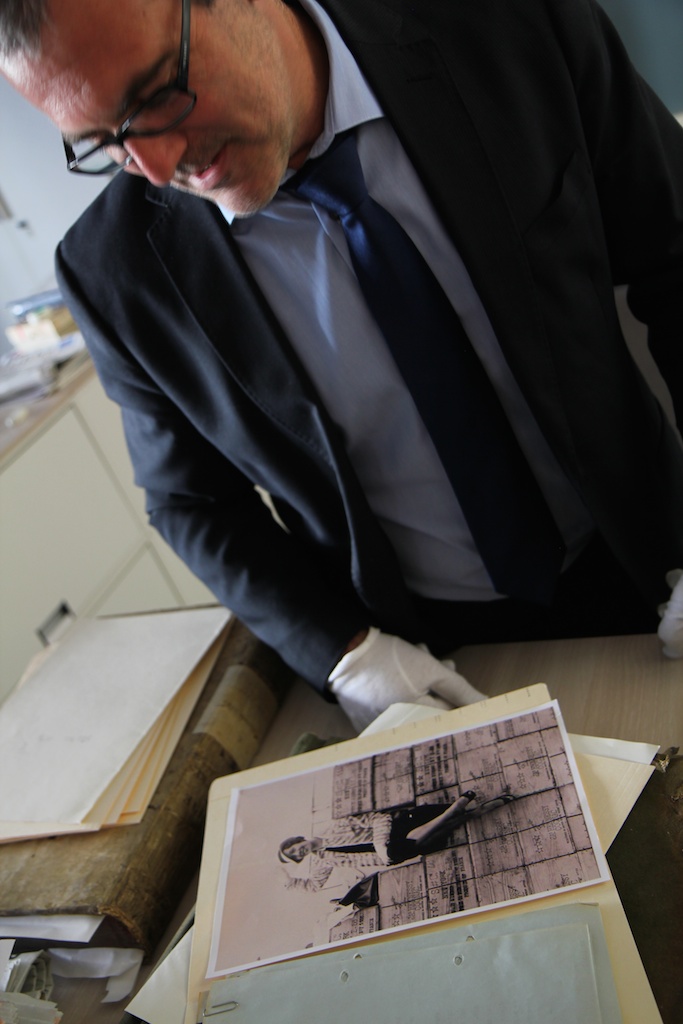
After walking through the warehouses, Maurice left us with Raphael Gerard: the chief historian of Hennessy’s archive department. He’s the guy who digs through records and old documents in search of more information about Hennessy’s past. I wish I would have had a tape recorder going because he told us a story so long and incredible that there’s no way I’ll ever be able to type it up now. It involved the role of Hennessy from the time of the French and American Revolutions until Prohibition was eventually lifted in the U.S. This was a photo of a famous jazz singer sitting on the first crates of Hennessy to enter the states after the ban was lifted.

If you think Hennessy isn’t authentic or doesn’t have a romantic and real heritage, then look at these original letters written by the brand’s first American importer back in 1786. These are real documents that are still around, thanks to James Hennessy—the son of Richard—who was fanatical about keeping everything in order for future generations. We spent a good twenty minutes digging through old boxes of this stuff! It didn’t seem like it could be real, but then again Hennessy Cognac is older than the United States, so it all makes sense in the end.

At 5 PM it was time to sit down with Olivier Paultes, the director of distilleries and part of the prestigious Hennessy tasting team. His job is to taste more than seventy different eaux-de-vie each day, and to ultimately keep track of quality control. I was very, very impressed by him. He was open-minded, interested in what our experiences with smaller producers were, and eager to help us learn more without seeming pedantic. More importantly, his passion for Cognac in general was clear and contagious.
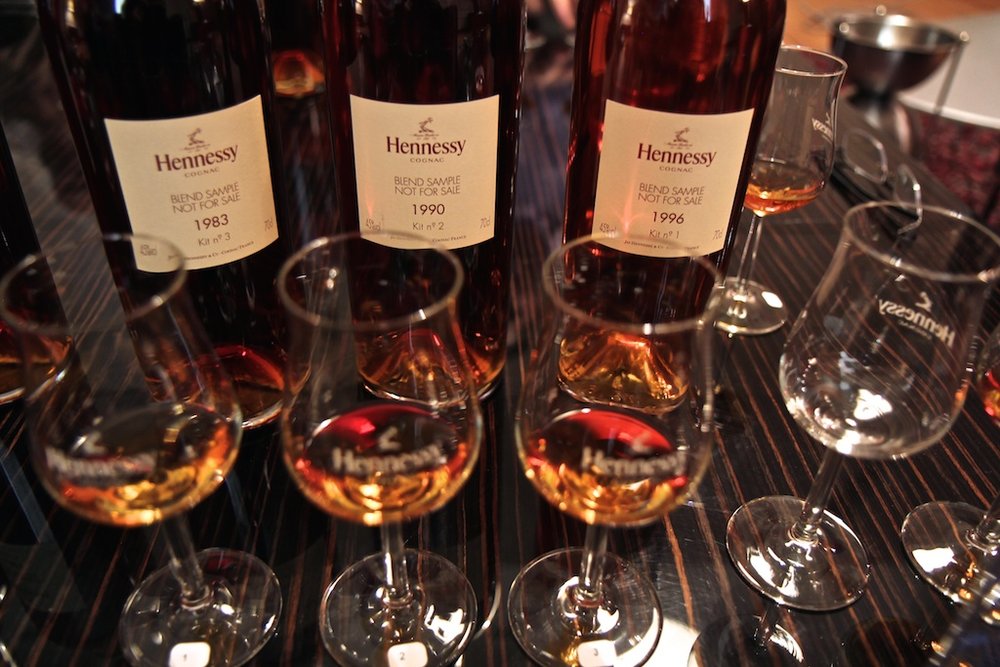
Finally, I got to experience something at Hennessy that I have been dying to do for years: taste the unblended brandies, from single vintages and individual estates, that make up the vast selection of Hennessy’s collection. Imagine if you were only able to taste Johnnie Walker Blended Whisky, and never the components like Caol Ila, Talisker, or Clynelish on their own. That’s kind of how I’ve long felt about Hennessy. I’ve always heard they have incredible stocks. I had just seen those vast inventories aging in person! But up until this point we had never been able to try them on their own. Olivier had set up a blending table for us, full of different sample bottles pulled from various estates and vintages, to show us how each component brandy ultimately contributes to the blend. I was in heaven. We tasted a 1965 cask so ridiculously good that it made my head spin.
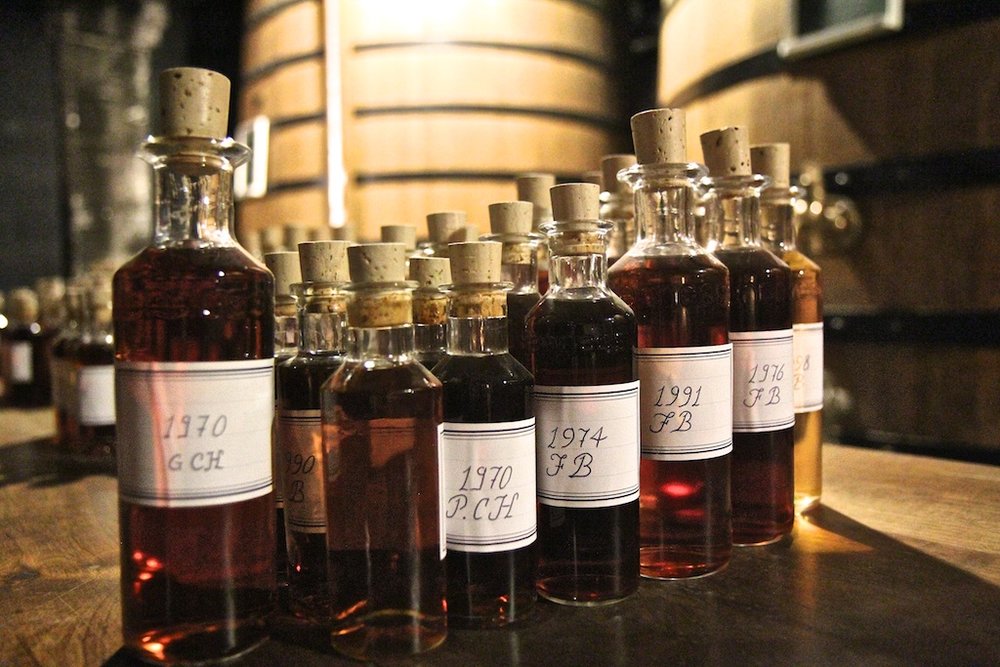
Ultimately, however, the back stocks of Hennessy are so vast and the demand for their Cognac so great, that the individualities of their single expressions will never be experienced by the general consumer. That’s simply not the business that Hennessy is in. They’re an incredibly large house that ships Cognac to every booze market there is. In the end, the Walker comparison is apt—except that, unlike young grain whisky made from inexpensive barley and distilled quickly on a column still, there’s nothing inexpensive or easy about making real Cognac. And, of course, there’s only so much that can be made each year. If a Scottish producer runs out of barley or wheat, they can always buy more from Eastern Europe or any other neighbor willing to sell them more supplies. They can distill year-round as long as they can get more grain. Cognac, however, is limited. It must be made from grapes and those grapes must be grown within the geographical borders of the region, harvested only once per year. Hence, why Hennessy buys as much brandy as they can get and meticulously manages their aging supplies.

We finished our visit to Hennessy with a fantastic dinner back at Chateau de Bagnolet; joined by our friends Jean-Baptiste and Olivier this time. We talked strategy and emerging trends in the new boutique market until late in the evening, Eventually Maurice took his leave, and as I walked with him out to the car I told him, “You delivered on your promise. You definitely showed me a side of Hennessy that I did not think existed.”
“I told you how it was. And was it indeed like I said?” he asked.
It was indeed, Maurice. While I still don’t know how successful K&L can be selling Hennessy and its ubiquitous marks, I know that my opinion of the Cognac brand is completely changed. Just because you’re supplying the world’s thirst for French brandy doesn’t mean you’re doing it at the expense of tradition or quality. It just means you have a much more difficult job, and sometimes that comes at a price. Hennessy could very well release the most incredible single vintage, single cask, single producer expressions ever seen within the industry, but that’s not their gig. They’re supplying the mass market—the Costcos and the duty free shops of airports all over the globe. It’s nice to know, however, that within those blends are some pretty incredible components. It’s nice to know that there is indeed a soul to Cognac’s reigning king.
-David Driscoll
